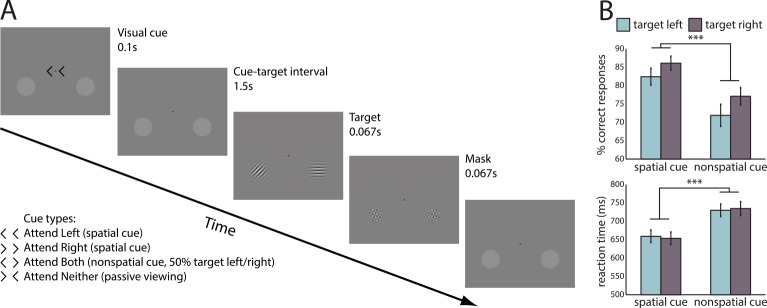Fig 1. (A) Experimental paradigm. Each trial began with one of four visual cues, instructing the subject either to attend to the left luminance pedestal, the right luminance pedestal, to both luminance pedestals, or to passively fixate. After a 1.5 s fixed interval, a pair of Gabor patches appeared in both luminance pedestals. One Gabor patch was always diagonally oriented (45° clockwise or counterclockwise from vertical), and the other cardinally oriented (horizontal or vertical). In the "attend left" and "attend right" conditions, the diagonal patch appeared respectively in the left or right pedestal; in the "attend both" and "attend neither" conditions, location of the diagonal patch was random. Subjects had to discriminate the orientation of the diagonal patch. (B) Analysis of behavioral data revealed that spatial cueing significantly improved both reaction time and accuracy, whereas target hemifield did not alter reaction time or accuracy.

